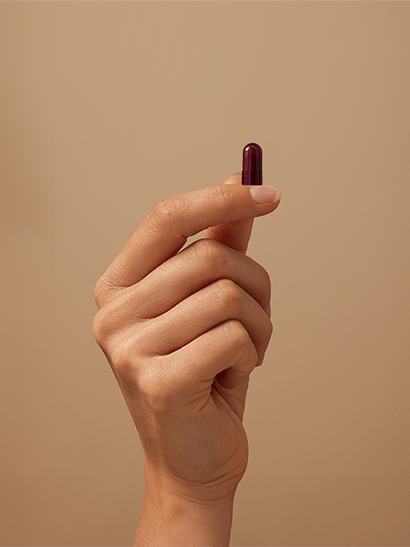For decades, society has wrestled with contradicting narratives about female sexuality. From conservative restraint to radical liberation, these perspectives have shaped how women relate to their desires, bodies, and relationships. But what if the current "equality" model of sexuality doesn't actually serve women's authentic needs?
At Good Kitty, we believe that understanding the complex interplay between biology, psychology, and culture is essential for women to develop a genuinely empowered relationship with their sexuality. This article explores the evolution of female sexual expression and offers a nuanced perspective on what true sexual empowerment might look like.
The Sexual Revolution and Female Liberation
The sexual revolution of the 1960s and 1970s marked a pivotal moment when women began challenging traditional notions of female "modesty" and sexual passivity. This movement rightfully pushed back against restrictive social norms that denied women's sexual agency and pleasure.
Erica Jong's 1973 novel "Fear of Flying" captured this aspiration with her concept of the "zipless fuck":
"The zipless fuck is absolutely pure. It is free of ulterior motives. There is no power game. The man is not 'taking' and the woman is not 'giving'... The zipless fuck is the purest thing there is. And it is rarer than the unicorn."
Jong's novel resonated with countless women trapped in sexually unfulfilling marriages. Many embraced the opportunity to explore sexual freedom, affairs, and the bodily autonomy that became central to second-wave feminism.
This radical reimagining of female sexuality challenged centuries of repression and opened new possibilities for women's sexual expression. The movement's importance cannot be overstated—it gave women permission to be sexual beings with desires and needs of their own.
The "Zipless" Ideal: Then and Now
Since Jong's era, casual sex has evolved from a revolutionary concept to a mainstream expectation. Today's hookup culture, facilitated by apps like Tinder, presents no-strings sex as normative for young people regardless of gender.
This evolution has largely sidelined the nuanced feminist discourse around specifically female sexuality that flourished in the decades following the sexual revolution. Instead, the dominant perspective now assumes men and women are essentially identical in their sexual motivations, with any differences attributed solely to patriarchal conditioning.

Contemporary research, however, suggests a more complex reality. According to studies on sexual behavior, significant differences persist in how men and women approach casual sex, even in societies with high gender equality. These differences raise important questions about the nature of female desire and whether the current model of sexual liberation truly serves women's wellbeing.
Good Kitty has found that many women report a disconnect between the casual sex they feel they should want and the emotionally connected experiences they find most fulfilling.
Evolutionary Biology vs. Cultural Conditioning
A year before Jong popularized the "zipless fuck," biologist Robert Trivers was investigating why men consistently demonstrate greater interest in casual sex across diverse cultures.
Trivers proposed that this asymmetry isn't primarily cultural but has evolutionary foundations. His parental investment theory suggests that across species, the parent who invests more in offspring care (typically females in mammals) will be more selective about mating partners.
This evolutionary perspective makes logical sense when we consider human reproductive biology:
- Before modern contraception, sexual intercourse carried potential pregnancy risks exclusively for women
- Pregnancy and child-rearing represented major investments of time and resources
- Female selectivity in sexual partners would help ensure better outcomes for potential offspring
Even in today's world of reliable contraception, these evolved preferences don't simply disappear. Studies from the Department of Psychology at Norwegian University show that gender differences in interest in casual sex persist even in highly egalitarian societies.
This doesn't mean women don't enjoy or desire sex—far from it. We at Good Kitty, celebrate the incredible capacity women have for sexual pleasure. What it does suggest is that the contexts, conditions, and connections that optimize female sexual satisfaction may differ from the casual, visual-centric model that dominates current sexual culture.
The Asymmetry of Desire
Beyond differences in approach to casual sex, male and female arousal patterns show consistent differences that have significant implications for sexual satisfaction.
Research consistently demonstrates that men are generally more visually stimulated than women and show more consistent interest in partners at peak fertility ages. These differences aren't just cultural—they appear across societies and align with evolutionary theories about reproductive strategies.
This creates real-world asymmetries that young women often encounter:
- Greater male interest in visual sexual content
- Different thresholds for sexual arousal
- Varying importance of emotional connection for sexual satisfaction
- Disparate approaches to sexual opportunism
These differences explain phenomena like the predominantly male consumption of visual pornography and the gender imbalance in platforms like OnlyFans, where subscribers are overwhelmingly male despite theoretical "equality" in sexual desire.

At Good Kitty, we want women explore their unique arousal patterns without judgment, recognizing that female sexuality often thrives with elements that mainstream hookup culture minimizes—elements like emotional connection, sensory richness, and narrative context.
When "Empowerment" Becomes Exploitation
Today's "sex-positive" narrative often presents young women's sexual objectification as empowerment. The concerning trend of teenagers transitioning their social media followings to adult content platforms immediately upon turning 18 raises serious questions about authentic agency versus exploitation.
This dynamic reveals what the egalitarian sexual narrative obscures: if men and women truly had identical sexual desires, wouldn't there be an equally robust market for young male bodies catering to older women?
The reality is that what's presented as female sexual empowerment often aligns suspiciously well with traditional male fantasy. As feminist scholars have noted, when "empowerment" means conforming to male-centered sexual scripts rather than discovering authentic female desire, it functions more as repackaged objectification than liberation.
Women can distinguish between authentic sexual expression and performative sexuality designed for others' consumption. True empowerment comes from understanding your own desires rather than adopting someone else's definition of liberation.
Reclaiming Authentic Female Sexuality
Acknowledging biological differences doesn't mean surrendering to determinism or returning to restrictive gender roles. Rather, it provides an opportunity to develop a more nuanced understanding of female sexuality that honors women's lived experiences.
What might a more authentic model of female sexuality include?
- Recognition that emotional connection enhances physical pleasure for many women
- Appreciation for the diverse contexts that facilitate female arousal
- Understanding that desire for commitment isn't necessarily "traditional" but may reflect genuine preference
- Valuing forms of intimacy beyond the physical
Finding Balance in Modern Relationships
The sexual revolution rightly sought to free women from unfair standards of modesty and sexual repression. However, the resulting model hasn't always balanced the playing field between sexes as intended. Instead, it's often normalized an approach to sexuality that aligns more with typical male patterns—visual, immediate, and less emotionally contingent.
This doesn't serve women who find themselves:
- Engaging in casual encounters that leave them feeling empty rather than empowered
- Unable to articulate desires for emotional connection without seeming "clingy"
- Participating in sexual trends that prioritize performance over pleasure
- Trading on youth and beauty in ways that create diminishing returns over time
A truly feminist approach to sexuality would validate women's authentic experiences rather than prescribing a one-size-fits-all model of liberation.

The alternative to current hookup culture isn't a return to sexual repression but rather the development of a sexual ethic that honors connection, mutual care, and long-term fulfillment alongside freedom and pleasure.
In relationships built on genuine affection and respect, bonds develop that transcend youth and physical appearance. Love and desire can persist through life's changes when they're grounded in more than transactional value. This approach offers much more lasting empowerment than systems that inadvertently commodify female sexuality.
Frequently Asked Questions
Does recognizing gender differences in sexuality mean supporting traditional gender roles?
No. Acknowledging biological influences on sexual preferences doesn't mean endorsing restrictive social roles. Understanding these differences allows for more authentic choices rather than less. Good Kitty's Beyond Binaries Guide explores how we can honor biological realities while rejecting harmful stereotypes.
Can women enjoy casual sex without emotional connection?
Absolutely. Individual women vary greatly in their sexual preferences, and many women do enjoy casual encounters. What matters is authentic choice—engaging in casual sex because it's genuinely desired rather than because it's expected or perceived as "empowered."
How can I determine what I actually want versus what culture tells me I should want?
Self-reflection practices like journaling, mindfulness, and honest conversations with trusted friends can help distinguish authentic desires from cultural scripts.
Does evolutionary psychology mean we're stuck with problematic behaviors?
No. Understanding our evolutionary heritage doesn't mean accepting problematic behaviors. Humans have remarkable capacity to shape our actions through conscious choice. Evolutionary insights simply help us understand certain tendencies so we can work with rather than against our nature in creating fulfilling relationships.
How can couples navigate different sexual preferences?
Open communication, mutual respect, and willingness to find common ground are essential. Neither partner should feel pressured to conform to the other's sexuality.
At Good Kitty, we believe that true sexual empowerment comes from understanding and honoring your authentic desires, whether they align with current trends or not. There's no single model of sexuality that works for everyone, and the most liberating approach is one that allows for genuine self-expression rather than conformity to any prescribed ideal.
References:
- Baumeister, R. F., & Twenge, J. M. (2022). Cultural suppression of female sexuality. Review of General Psychology, 6(2), 166-203.
- Conley, T. D., Ziegler, A., & Moors, A. C. (2023). Backlash from the bedroom: Stigma mediates gender differences in acceptance of casual sex offers. Psychology of Women Quarterly, 37(3), 392-407.
- Fisher, M. L., et al. (2024). Evolution and human sexuality: How evolved preferences shape sexual behavior. Annual Review of Psychology, 75, 111-139.
- Meston, C. M., & Buss, D. M. (2022). Why women have sex: Understanding sexual motivations from adventure to revenge. Archives of Sexual Behavior, 41(4), 311-318.
- Regnerus, M., & Uecker, J. (2023). Premarital sex in America: How young Americans meet, mate, and think about marrying. Oxford University Press.
- Good Kitty Research Team. (2025). Female Sexual Satisfaction Survey Results. Good Kitty Research Publications.
Read more

Reigniting the Spark: How to Overcome Sexual Ruts and Revitalize Intimacy At Good Kitty, we believe sexual wellness requires the same attention and care as other aspects of health.

A Complete Guide to Full-Body Pleasure : Understanding Female Pleasure: Beyond the Basics. Many women have heard about clitoral and vaginal orgasms, but the world of female pleasure is far more div...








